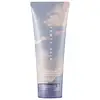What's inside
What's inside
 Key Ingredients
Key Ingredients

 Benefits
Benefits

 Concerns
Concerns

 Ingredients Side-by-side
Ingredients Side-by-side

Glycerin 40%
HumectantWater
Skin ConditioningPanthenol
Skin ConditioningEthylhexyl Stearate
EmollientCetyl Alcohol
EmollientStearyl Alcohol
EmollientMangifera Indica Seed Butter
Skin ConditioningAstrocaryum Murumuru Seed Butter
EmollientCitrullus Lanatus Seed Oil
EmollientHibiscus Sabdariffa Seed Oil
EmollientMalpighia Punicifolia Fruit Extract
AntioxidantGarcinia Mangostana Fruit Extract
Skin ConditioningTocopherol
AntioxidantSodium Phytate
Palmitic Acid
EmollientCetearyl Alcohol
EmollientDimethicone
EmollientCetearyl Glucoside
EmulsifyingStearic Acid
CleansingCaprylyl Glycol
EmollientButylene Glycol
HumectantGlycine Soja Oil
EmollientSodium Polyacrylate
AbsorbentHydroxyethyl Acrylate/Sodium Acryloyldimethyl Taurate Copolymer
Emulsion StabilisingPhenoxyethanol
PreservativeParfum
MaskingLinalool
PerfumingLimonene
PerfumingBenzyl Salicylate
PerfumingHexyl Cinnamal
PerfumingGlycerin 40%, Water, Panthenol, Ethylhexyl Stearate, Cetyl Alcohol, Stearyl Alcohol, Mangifera Indica Seed Butter, Astrocaryum Murumuru Seed Butter, Citrullus Lanatus Seed Oil, Hibiscus Sabdariffa Seed Oil, Malpighia Punicifolia Fruit Extract, Garcinia Mangostana Fruit Extract, Tocopherol, Sodium Phytate, Palmitic Acid, Cetearyl Alcohol, Dimethicone, Cetearyl Glucoside, Stearic Acid, Caprylyl Glycol, Butylene Glycol, Glycine Soja Oil, Sodium Polyacrylate, Hydroxyethyl Acrylate/Sodium Acryloyldimethyl Taurate Copolymer, Phenoxyethanol, Parfum, Linalool, Limonene, Benzyl Salicylate, Hexyl Cinnamal
Glycerin
HumectantUrea
BufferingGlyceryl Stearate
EmollientDibutyl Adipate
EmollientStearyl Alcohol
EmollientDicaprylyl Ether
EmollientCetearyl Alcohol
EmollientSodium Lactate
BufferingTapioca Starch
Glyceryl Stearate Se
EmulsifyingLactic Acid
BufferingSodium PCA
HumectantArginine Hcl
Skin ConditioningGlycine
BufferingAlanine
MaskingCarnitine
CleansingHelianthus Annuus Seed Oil
EmollientDimethicone
EmollientXanthan Gum
EmulsifyingPentylene Glycol
Skin ConditioningPhenoxyethanol
PreservativeSodium Cetearyl Sulfate
CleansingGlycerin, Urea, Glyceryl Stearate, Dibutyl Adipate, Stearyl Alcohol, Dicaprylyl Ether, Cetearyl Alcohol, Sodium Lactate, Tapioca Starch, Glyceryl Stearate Se, Lactic Acid, Sodium PCA, Arginine Hcl, Glycine, Alanine, Carnitine, Helianthus Annuus Seed Oil, Dimethicone, Xanthan Gum, Pentylene Glycol, Phenoxyethanol, Sodium Cetearyl Sulfate
 Reviews
Reviews

Ingredients Explained
These ingredients are found in both products.
Ingredients higher up in an ingredient list are typically present in a larger amount.
Cetearyl alcohol is a mixture of two fatty alcohols: cetyl alcohol and stearyl alcohol. It is mainly used as an emulsifier. Emulsifiers help prevent the separation of oils and products. Due to its composition, it can also be used to thicken a product or help create foam.
Cetearyl alcohol is an emollient. Emollients help soothe and hydrate the skin by trapping moisture.
Studies show Cetearyl alcohol is non-toxic and non-irritating. The FDA allows products labeled "alcohol-free" to have fatty alcohols.
This ingredient is usually derived from plant oils such as palm, vegetable, or coconut oils. There is debate on whether this ingredient will cause acne.
Due to the fatty acid base, this ingredient may not be Malassezia folliculitis safe.
Learn more about Cetearyl AlcoholDimethicone is a type of synthetic silicone created from natural materials such as quartz.
What it does:
Dimethicone comes in different viscosities:
Depending on the viscosity, dimethicone has different properties.
Ingredients lists don't always show which type is used, so we recommend reaching out to the brand if you have questions about the viscosity.
This ingredient is unlikely to cause irritation because it does not get absorbed into skin. However, people with silicone allergies should be careful about using this ingredient.
Note: Dimethicone may contribute to pilling. This is because it is not oil or water soluble, so pilling may occur when layered with products. When mixed with heavy oils in a formula, the outcome is also quite greasy.
Learn more about DimethiconeGlycerin is already naturally found in your skin. It helps moisturize and protect your skin.
A study from 2016 found glycerin to be more effective as a humectant than AHAs and hyaluronic acid.
As a humectant, it helps the skin stay hydrated by pulling moisture to your skin. The low molecular weight of glycerin allows it to pull moisture into the deeper layers of your skin.
Hydrated skin improves your skin barrier; Your skin barrier helps protect against irritants and bacteria.
Glycerin has also been found to have antimicrobial and antiviral properties. Due to these properties, glycerin is often used in wound and burn treatments.
In cosmetics, glycerin is usually derived from plants such as soybean or palm. However, it can also be sourced from animals, such as tallow or animal fat.
This ingredient is organic, colorless, odorless, and non-toxic.
Glycerin is the name for this ingredient in American English. British English uses Glycerol/Glycerine.
Learn more about GlycerinPhenoxyethanol is a preservative that has germicide, antimicrobial, and aromatic properties. Studies show that phenoxyethanol can prevent microbial growth. By itself, it has a scent that is similar to that of a rose.
It's often used in formulations along with Caprylyl Glycol to preserve the shelf life of products.
Stearyl Alcohol is a type of fatty alcohol from stearic acid. It is a white, waxy compound used to emulsify ingredients.
Fatty Alcohols are most often used as an emollient or to thicken a product. Emollients help soothe and hydrate the skin by trapping moisture.
They are usually derived from natural fats and oils and therefore do not have the same drying or irritating effect as solvent alcohols. FDA allows products labeled "alcohol-free" to have fatty alcohols.
Learn more about Stearyl Alcohol